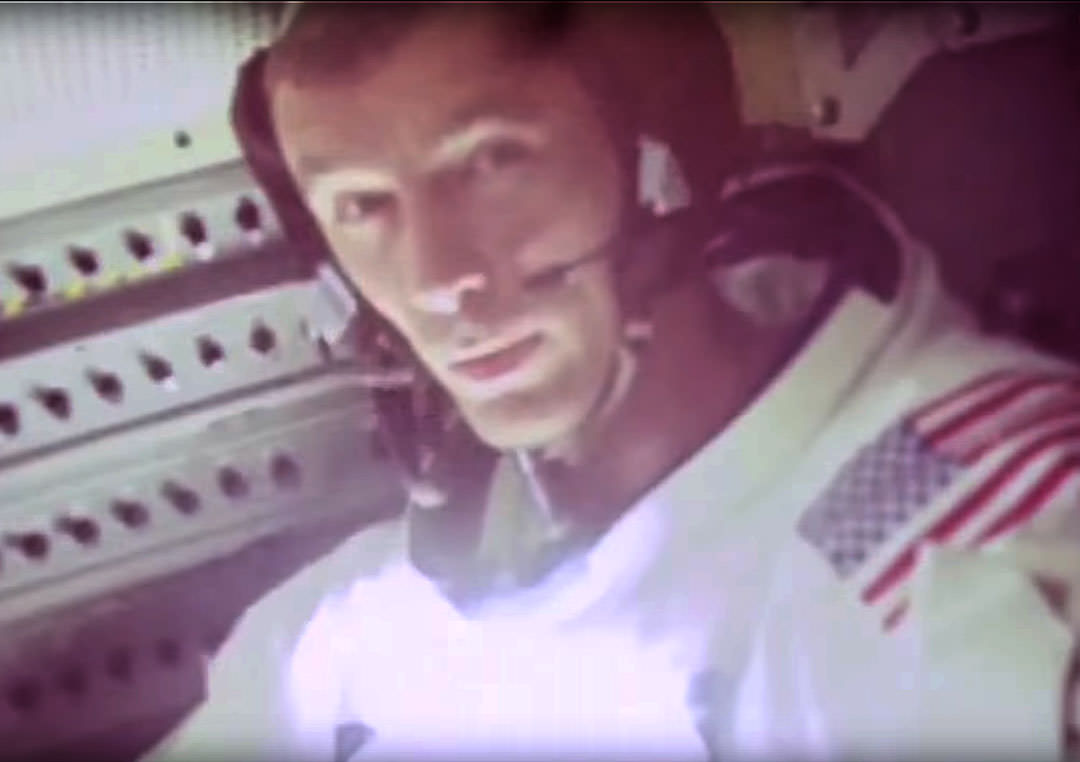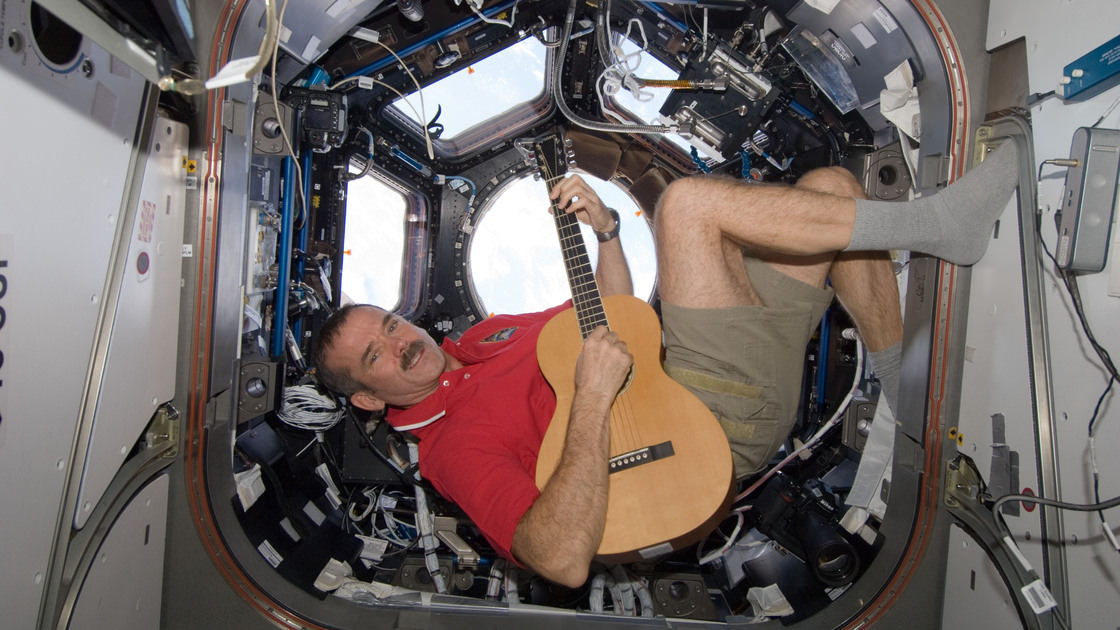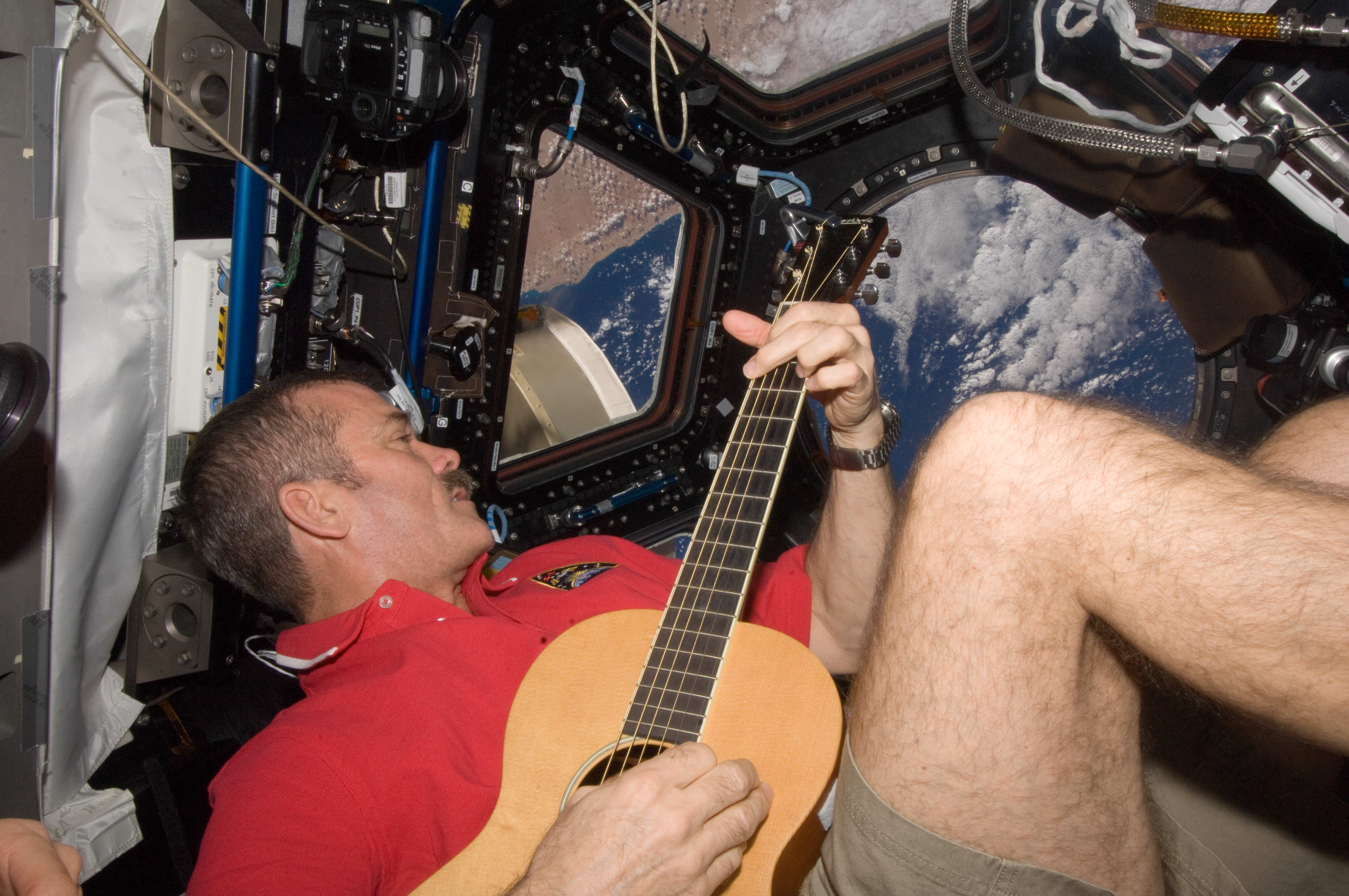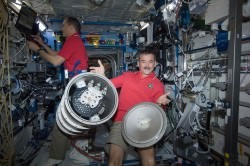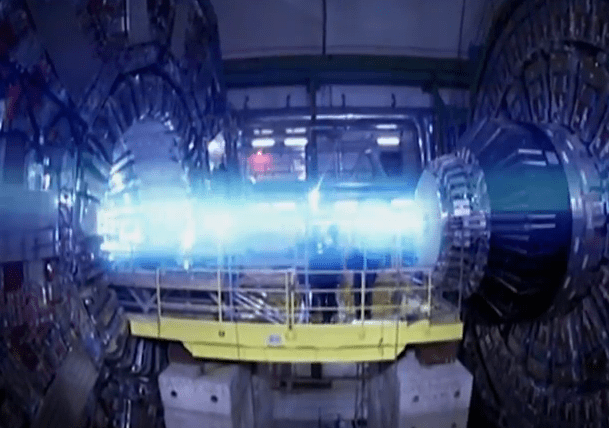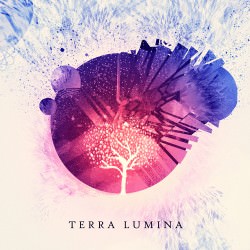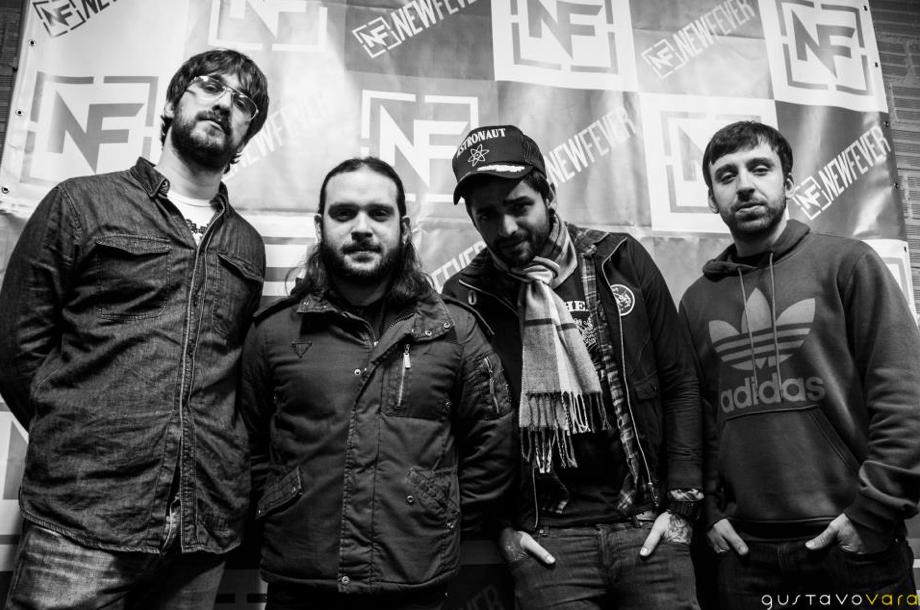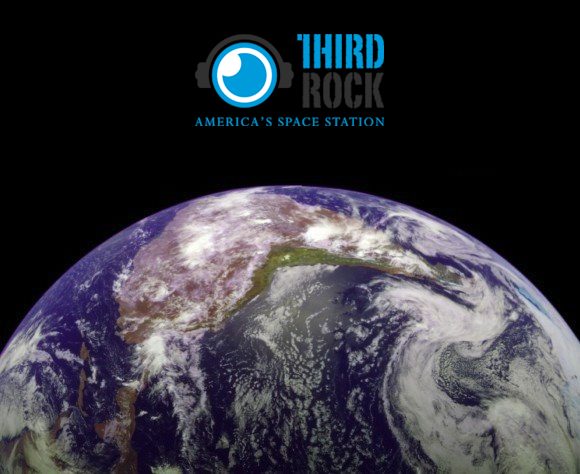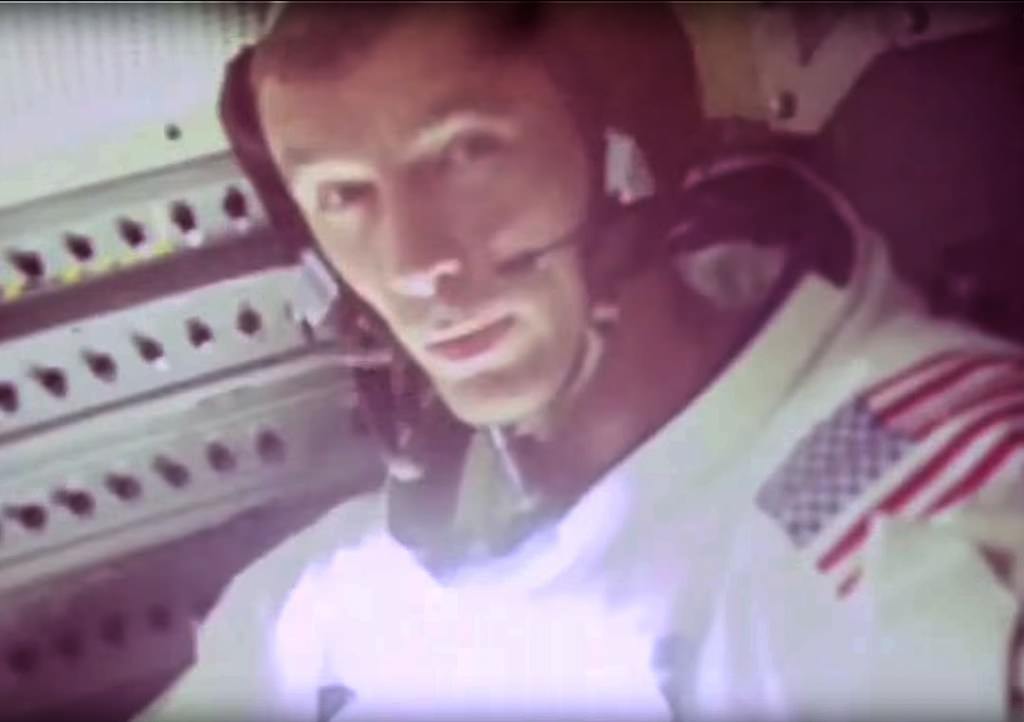
Calling it music is a stretch, but that’s exactly how the Apollo 10 astronauts described the creepy sounds they heard while swinging around the farside of the moon in May 1969. During the hour they spent alone cut off from communications with Earth, all three commented about a persistent “whistling” sound that lunar module pilot (LMP) likened to “outer-space-type-music”. Once the craft returned to the nearside, the mysterious sounds disappeared.
Apollo 10 Farside-of-the-Moon Music.
Hands down it was aliens! I wish. Several online stories fan the coals of innuendo and mystery with talk of hidden files and NASA cover-ups narrated to disturbing music. NASA agrees that the files were listed as ‘confidential’ in 1969 at the height of the Space Race, but the Apollo 10 mission transcripts and audio have been publicly available at the National Archives since 1973. Remember, there was no Internet back then. The audio files were only digitized and uploaded for easy access in 2012. Outside of the secretive ’60s, the files have been around a long time.
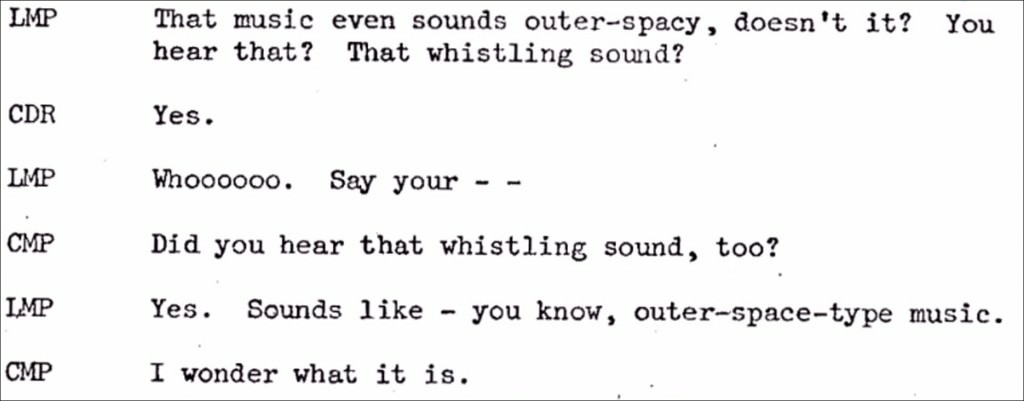
The story originally broke Sunday night in a show on the cable channel Discovery as part of the “NASA’s Unexplained Files” series; you’ll find their youtube video below. As I listen to the sound file, I hear two different tones. One is a loud, low buzz, the other a whooshing sound. My first thought was interference of some sort for the buzzing sound, but the whoosh reminded me of a whistler, a low frequency radio wave generated by lightning produced when energy from lightning travels out into Earth’s magnetic field from one hemisphere to another. Using an appropriate receiver, we can hear whistlers as descending, whistle-like tones lasting up to several seconds.
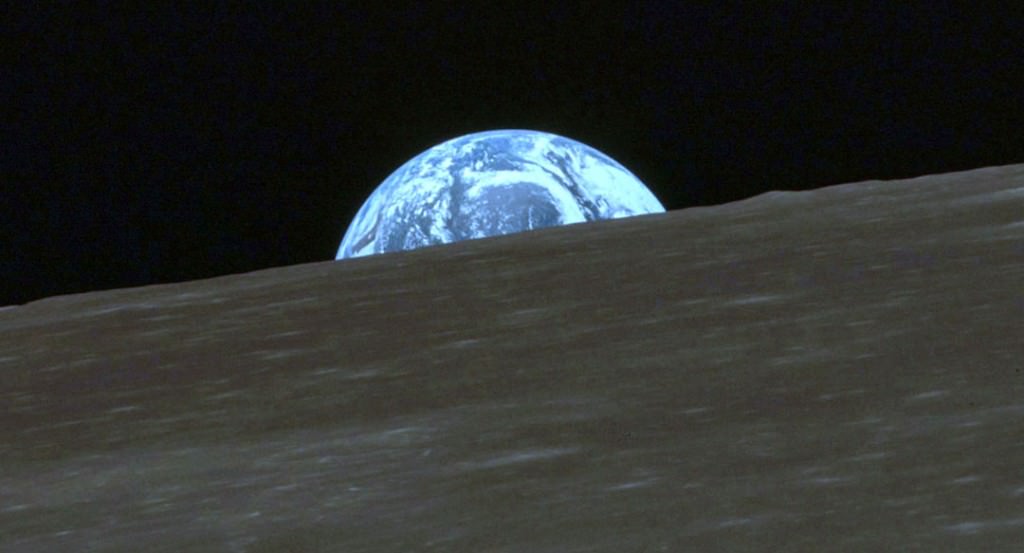
Lightning’s hardly likely on the Moon, and whistlers require a magnetic field, which the Moon also lacks. The cause turns out to be, well, man-made. Cernan’s take was that two separate VHF radios, one in the lunar module and the other in command module, were interfering with one another to produce the noise. This was later confirmed by Apollo 11 astronaut Mike Collins who flew around the lunar farside alone when Buzz Aldrin and Neil Armstrong walked on the Moon’s surface.

In his book Carrying the Fire, Collins writes: “There is a strange noise in my headset now, an eerie woo-woo sound.” He said it might have scared him had NASA’s radio technicians not forewarned him. The “music” played when the two craft were near one another with their radios turned on. Unlike Apollo 10, which never descended to the Moon’s surface but remained near the command module, the Apollo 11 lunar module touched down on the Moon on July 20, 1969. Once it did, Collins writes that the ‘woo-woo’ music stopped.
The astronauts never talked publicly or even with the agency about hearing weird sounds in space for good reason. Higher-ups at NASA might think them unfit for future missions for entertaining weird ideas, so they kept their thoughts private. This was the era of the “right stuff” and no astronaut wanted to jeopardize a chance to fly to the Moon let alone their career.
Outer Space Music Part 1 of NASA’s Unexplained Files — to be taken with a boulder of salt
In the end, this “music of the the spheres” makes for a fascinating tidbit of outer space history. There’s no question the astronauts were spooked, especially considering how eerie it must have felt to be out of touch with Earth on the far side of the Moon. But once the sounds stopped, they soldiered on — part of the grand human effort to touch another world.
“I don’t remember that incident exciting me enough to take it seriously,” Gene Cernan told NASA on Monday. “It was probably just radio interference. Had we thought it was something other than that we would have briefed everyone after the flight. We never gave it another thought.”
Messages from the Ringed Planet
Want to hear some real outer space music? Click the Saturn video and listen to the eerie sound of electrons streaming along Saturn’s magnetic field to create the aurora.

